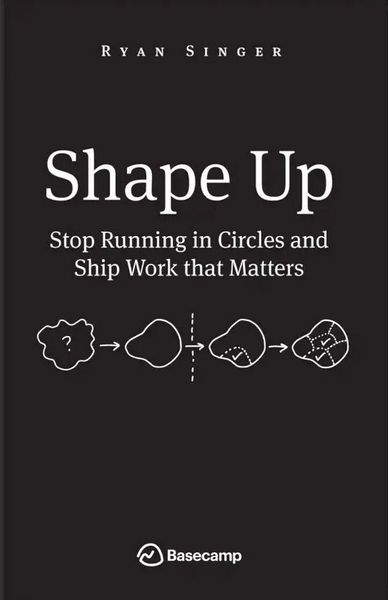
Shape Up Stop Running in Circles and Ship Work that Matters
Shape Up is for product development teams who struggle to ship. If you’ve thought to yourself “Why can’t we ship like we used to?” or “I never have enough time to think about strategy,” then this book can help. You’ll learn language and techniques to define focused projects, address unknowns, and increase collaboration and engagement within your team.
Reviews
Rafael Matsumoto@rafaelmatsumoto
Diego Larrain@dly
Nick Gracilla@ngracilla
Josh Clement@joshclement
Luke Jones@lukejones
Les Reynolds@lreynolds
Mateusz Gostanski@mgostanski
Aleksander Kruszelnicki@alkrusz
Sebastian Stoelen@sebastianstoelen
Imran@imranashraf
Jorge Ruvalcaba@jorgearuv
Bailey Jennings@baileyjennings
Niels Andersen@nielsandersen
Priyanka Pal@priyanka__pal
Sebastian De Deyne@sebdd
David Furnes@dfurnes
Ricardo@ricardobarbosa
Michael Ernst@beingernst
Andrei Stanciu@andreistanciu
Mert@mertb
Andrea@andreat
Rudd Zwolinski@starling
Daniel Toke Hansen@danieltoke
Cheah Chu Yeow@chuyeow
Highlights
Casper Klenz-Kitenge@cabgfx
Page 29